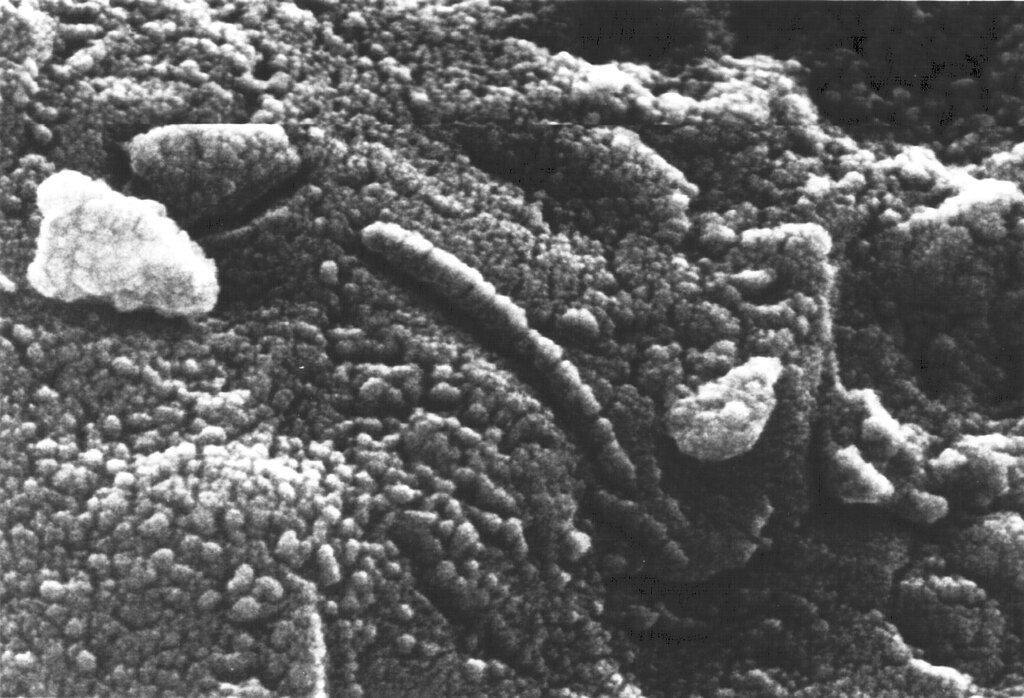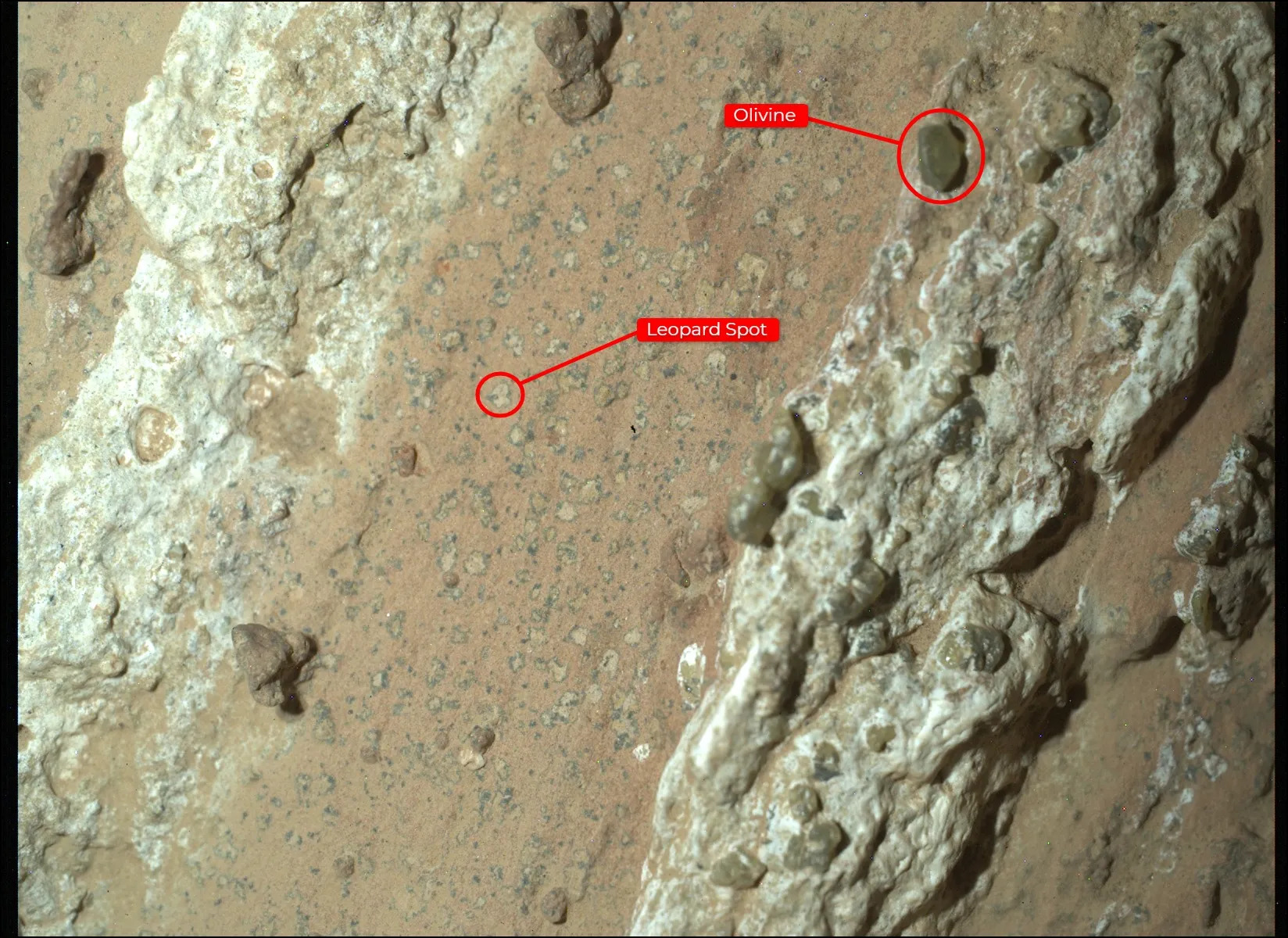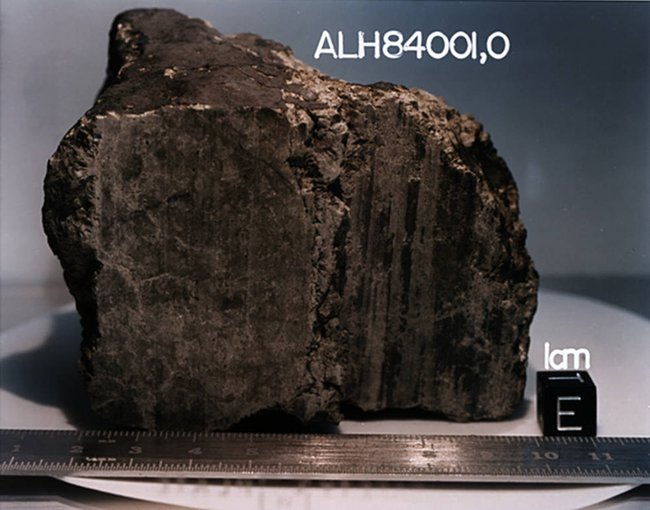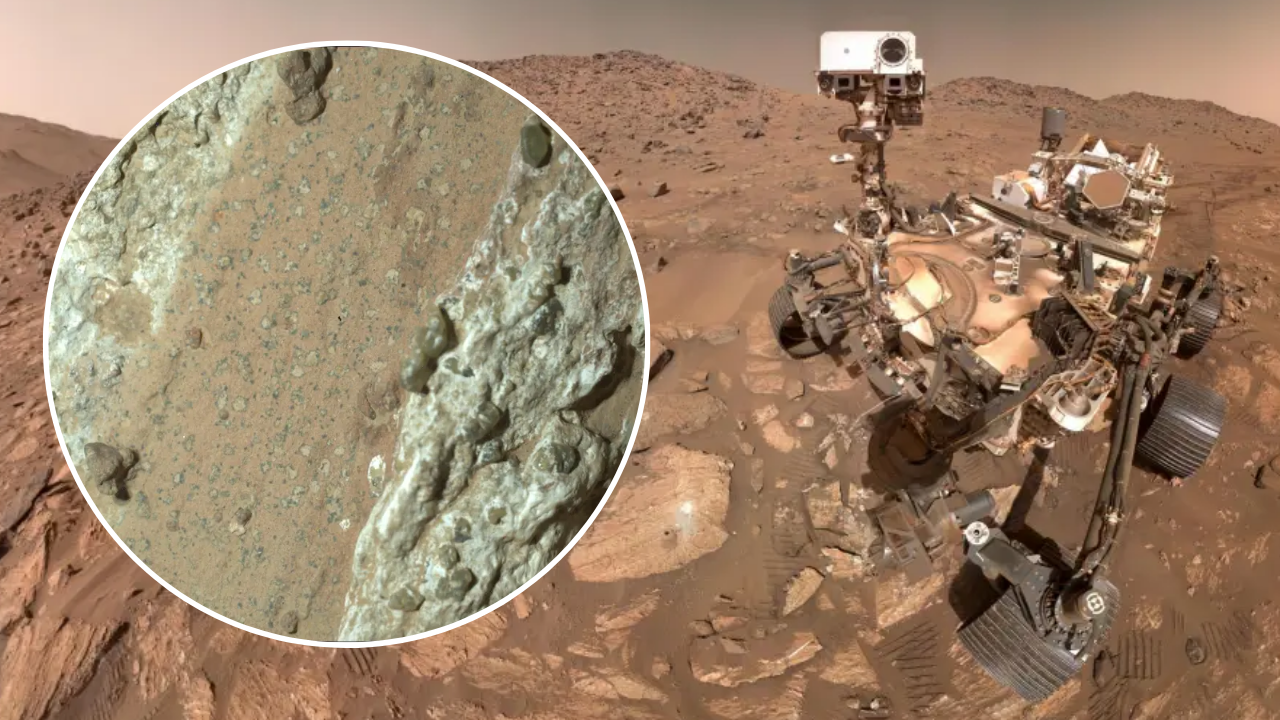The Perseverance rover’s discovery of a potential biosignature found on a sedimentary rock on Mars is an exciting development in our search for life elsewhere in the universe, but how does it rank compared to other potential biosignatures that have previously been discovered on the Red Planet — and even beyond?
“It’s arguably the best evidence that we have so far for microbial life on early Mars,” Oleg Abramov of the Planetary Science Institute told Space.com.
A rover and a rock
When Perseverance, trundling through an ancient river delta in Jezero crater on Mars, came across a large sedimentary rock that mission scientists have nicknamed “Cheyava Falls,” it found something highly unusual, or at least unusual for Mars: light spots on the red rock, each spot ringed by dark material. Because of the way these features appear, scientists have referred to them as “leopard spots,” and indeed we see similar spots on rocks on Earth.
Here, they can form in one of two ways.
One way is when iron-rich rock is exposed to high temperatures and acidic conditions, but neither are evident in the area around Cheyava Falls.
The other way? Life.
The rock Perseverance found appears to be rich in hematite, a common iron oxide that forms in liquid water — which makes sense because the rover is exploring an old, dried-up river valley and delta. Chemical reactions involving the hematite can turn the rock from red to white and produce iron rich minerals, in this case an iron phosphate called vivianite and an iron sulfide called greigite.Both are associated with microbial life on Earth in that they are useful energy sources. There’s also organic material present (organic in this sense means molecules with at least one carbon atom, but not necessarily part of something that was living), preserved in the clay sediments, although Perseverance’s instruments are unable to determine what kind of organic molecules they are.
To be clear, Cheyava Falls is not confirmation that there was life on Mars. “But,” Abramov says, “it’s intriguing, and definitely worth further study.”
The controversial Mars meteorite
However, this is not the first time the question of life on Mars has come up.
“There have been some hints of biological activity on Mars reported previously,” said Abramov.
Back in 1996, NASA scientists led by David McKay claimed they had found minerals associated with life and even possible microfossils in a meteorite named ALH84001. It was located in Antarctica in 1984, but came from Mars. The discovery caused quite a stir, and the hype only increased when the finding was announced by former U.S. president Bill Clinton.
It didn’t take long for the excitement to falter, however. Other researchers took a look at the data and found that inorganic processes or terrestrial contamination could replicate all the evidence from the meteorite.
Abramov points out that this does not disprove the Mars life explanation, but rather just presents an alternative, albeit much more probable, explanation for the evidence.
“It hasn’t been ruled that what was observed in ALH84001 was a consequence of Martian biology — it may very well be,” he said. “But while at the time it seemed fairly compelling evidence, in retrospect it was probably hyped up more than it should have been.”
Abramov feels the astrobiology and planetary science communities have learned some lessons from the Martian meteorite saga in terms of how these discoveries, which carry with them a degree of ambiguity, are presented.
“ALH84001 actually shares some similarities with this new finding in Jezero,” he said. “Both cases involve organic material and minerals that are generally precipitated by life. But this new finding in Jezero is arguably stronger evidence, but it’s not being hyped up the way that ALH84001 was.”

Methane on Mars
Another intriguing biosignature that is less controversial but still unexplained is the anomalous plumes of methane gas on Mars, first found by astronomers using ground-based telescopes in 2003, followed by the European Space Agency’s Mars Express orbiter in 2004, and most recently by NASA’s Curiosity rover and Europe’s Trace Gas Orbiter. Unlike the uncertainty regarding the contents of the ALH84001 meteorite, the methane is definitely there, but where is it coming from?
Methane is easily destroyed by solar ultraviolet light, so something must be replenishing it on Mars. The methane plumes are also highly localized. On Earth, methane is largely produced by life, but there are also geophysical sources of the gas too, such as reactions between water and rock, or “serpentinization, “which is a chemical reaction involving carbon dioxide, water and olivine, which is a common mineral on Mars.
“The plumes are intriguing but ambiguous,” said Abramov. “The levels of methane in the Martian atmosphere do seem to fluctuate, but they are very small amounts at the parts per million level, and we’re not sure what the source is. It could be biological activity in the subsurface or maybe a hydrothermal-type environment, but it could also be something abiological.”
Biosignatures beyond Mars
Furthermore, researchers are not only looking for and finding biosignatures on Mars; there is evidence for them elsewhere, too.
In 2020, astronomers led by Jane Greaves of the University of Cardiff claimed to have detected the gas phosphine in the atmosphere of Venus. The second planet from the sun has a completely inhospitable surface, with temperatures reaching 863 degrees Fahrenheit (462 degrees Celsius) and a crushing pressure underneath an oppressively thick atmosphere. There is, however, a region in its atmosphere at an altitude of over 31 miles (50 kilometers), where the temperature and pressure are almost Earth-like. On our planet, phosphine is produced only by life. Could its detection on Venus mean there is life in its clouds, or is some inorganic chemistry, unknown on Earth, producing it?
The discovery is controversial, however, because many other scientists have argued against the analysis of the data by Greaves’ team and have mostly failed to detect the specific gas in their own observations, although there are claims of detecting phosphine on Venus by two instruments now: the James Clerk Maxwell Telescope in Hawaii and the Atacama Large Millimeter/submillimeter Array (ALMA) in Chile. The issue might not get cleared up until new missions go to Venus; unfortunately, NASA’s planned Venus missions are possible casualties of budget cuts facing NASA in the next financial year — although a European mission, named EnVision, is still set for launch in 2031.
More recently, there is the claim for the detection of a biosignature gas, dimethyl sulfide, in the atmosphere of an exoplanet called K2-18b. Some models suggest that K2-18b is a hycean world — an ocean planet with a thick atmosphere of hydrogen — and the signature of dimethyl sulfide was detected by the James Webb Space Telescope. However, just as with phosphine on Venus, the claimed detection has been strongly disputed. It is right at the limits of the JWST’s abilities to detect, so we might not get confirmation one way or another until a larger space telescope is launched.
We don’t necessarily have to face that problem for Mars and Cheyava Falls. Perseverance has taken a sample of the rock, stowing it away in a protective canister for a future mission to pick up and return to Earth.
“It would be great to get those samples back to Earth and into a terrestrial laboratory,” says Abramov. “Then we could analyze those samples to high resolution, and we might find other lines of evidence such as potential microfossils and other minerals.”
However, those waiting for a eureka moment, a definite discovery, might still be in for disappointment. It’s easy to forget that the biosignature on Cheyava Falls is billions of years old, and what we’re seeing is a trace, of a trace, of a trace, of what might have been connected to microbial life in the past.
“In terms of a definitive answer, the way I look at it is, as scientists, we get closer and closer to the truth without quite getting there,” says Abramov. “So in terms of saying definitively whether it is life or not, that is going to be very difficult if not impossible.”
Unfortunately, NASA’s planned Mars Sample Return mission to collect Perseverance’s sample canisters is under threat. Technical and cost problems have seen NASA turn to private aerospace companies to see if they can come up with a solution to making the mission successful, but even if they can, it might not survive the cost-cutting facing NASA in the Trump Administration’s planned budget for the 2026 financial year.
“Getting those samples to Earth and analyzing them in proper labs is going to be our best chance of understanding what’s happening,” says Abramov.
Only then could scientists make possibly the greatest discovery in history: the discovery of life, past or present, on another planet.
Source link



